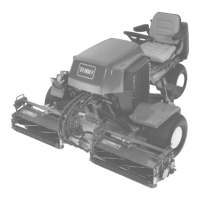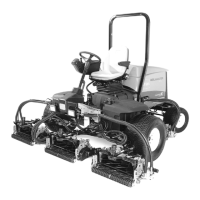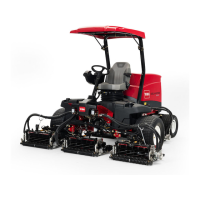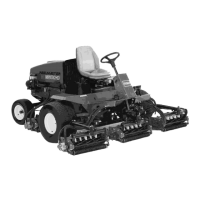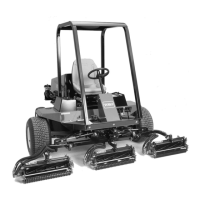2. Release belt tension to the cutting units, refer to
Releasing Belt Tension to the Cutting Units.
3. Slowly turn the reel in reverse direction, listening
for reel-to-bedknife contact. If no contact is evi-
dent, turn bedknife adjusting knob clockwise, one
click at a time, until light contact is felt and heard.
4. If excessive contact is felt, turn the bedknife adjust-
ing knob counterclockwise, one click at a time until
no contact is evident. Then turn the bedknife
adjusting knob one click at a time clockwise, until
light contact is felt and heard.
IMPORTANT Light contact is preferred at all
times. If light contact is not maintained, bed-
knife/ reel edges will not sufficiently self-sharpen
and dull cutting edges will result. If excessive
contact is maintained, bedknife/reel wear will be
accelerated, uneven wear can result, and quality
of cut may be adversely affected.
Note: As the reel blades continue to run against the
bedknife, a slight burr will appear on the front cut-
ting edge surface the full length of the bedknife. If
a file is occasionally run across the front edge to
remove this burr, improved cutting can be obtained.
After extended running, a ridge will eventually develop
at both ends of the bedknife. These notches must be
rounded off or filed flush with the bedknife’s cutting
edge to assure smooth operation.
22
Operating

